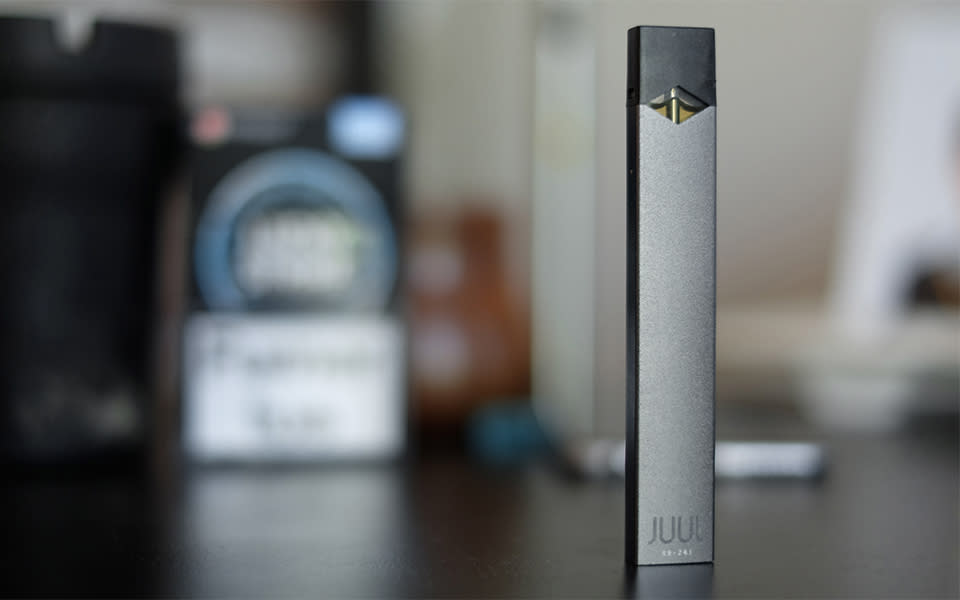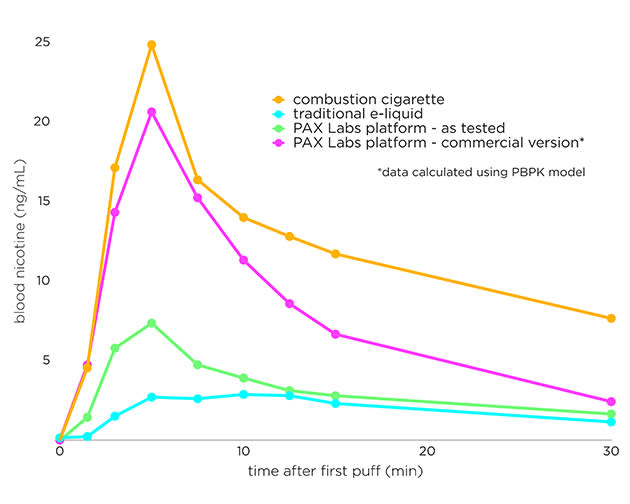Juul is the e-cig that will finally stop me from smoking (I hope)

I started smoking at 13. To be honest, I can't even pin the blame on peer pressure. Maybe it was my teenage desire to rebel; maybe I just wanted to look cool. I'm not sure why I started, but I know that I've never been able to stop. And I haven't had a day without a cigarette in at least 14 years. I've owned four e-cigarettes over the past three years, and despite my efforts to transition to vaping full-time, none of them have been able to replace tobacco for me. They have nonetheless been a good supplement, filling in when I'm unable, either due to social niceties or because it's forbidden, to smoke the real thing. Enter Pax Labs, the company behind the excellent loose-leaf vaporizer of the same name, which claims it's solved all my e-cigarette issues with its first attempt, the $50 Juul.
There are a few things stopping me from vaping full-time, things that Juul (pronounced "jewel") has to fix to win my affection. First, there's the fact that it isn't exactly like the real thing. Vaping feels more like smoking a hookah (water pipe), and the nicotine "high," for lack of a better word, never reaches the altitude of a Marlboro or Lucky Strike. An e-cig can only ever hold me over. A few hours without a cigarette and, no matter how much I've vaped, I'm itching to light one up. Second, it's all a massive hassle: unscrewing the battery to charge it, drip-feeding juice into the chamber. I've spilled that juice on my hands numerous times (I'm a clumsy person), once making myself ridiculously dizzy in the process. There's also the image thing. I'm not massively vain, but sucking down on a giant whistle is never going to be cool. As proved by its first ad, Juul is trying very hard to be cool.
Pax's entrant into what is becoming an increasingly crowded market is familiar, but nonetheless unique. The company's CEO, James Monsees, says this design, and Juul's existence, came about after it decided current products weren't up to scratch. "E-cigs have fallen short because they haven't delivered consumer satisfaction," he posits. Juul, he believes, is better than smoking. Not just analogous, but better. It's definitely unique. It looks less like an e-cigarette and more like a USB drive; an incredibly light, rectangular prism with a hole for a capsule (which also acts as a mouthpiece) at one end. Everything feels precisely machined, right down to the neat little charging dock that plugs into your USB port, meaning you won't need to disassemble or even stop using Juul to charge it; just drop it into the dock, and the magnetic charging pins do the rest. Like the NJOYs and Blus generally reviled by more "serious" vapers, rather than pushing a button, you just toke on the capsule-end of Juul to draw vapor.
Starting this week, Pax is offering Juul capsules ("JuulPods") in a choice of four autocorrect-hating flavors -- Tabaac (tobacco), Miint (mint), Fruut (fruit) and Bruule (crème brûlée). They're available in a four-pack for $15.99, with each roughly equating to one pack of cigarettes in terms of nicotine content. More flavors are coming, based primarily on user feedback -- I'd really like a less-sweet tobacco option -- but for now they're all palatable. Each capsule has an enclosed heating element and wick that prevent overheating and ensure there's no drop-off when they're almost empty. But that's not really the selling point -- it's what's inside the capsules that's special.
Juice currently on the market uses freebase nicotine, but that's not how nicotine exists in the real world. "Nicotine in nature is a compound that wants to form and join with the organic acids and salts you find in tobacco leaves," Monsees explains. To that end, Pax developed a juice that's blended with nicotine salts, which supposedly delivers the drug to you in a more similar fashion to combustible cigarettes.

A study showing the rate that nicotine is absorbed into and stays in test subject's blood.
The image above is from a study (paid for by Pax, but carried out independently) that shows how the salts work. The "projection" you see on the diagram (based on the increase in nicotine from the initial test to what's in the final capsules) is more or less what I experienced: a nicotine hit almost indistinguishable from a cigarette. And it really does work -- whereas regular e-cigs only keep back my cravings for a few hours at a time, Juul almost entirely replaced my smoking. Sadly, I've run out of capsules, but until that happened I had gone from smoking 20 to 30 cigarettes per day to smoking 11 over five days. Sure, its vapor isn't as thick as that produced by some of the mod boxes you can buy, but it's very similar to regular cigarettes, and the feeling you get from it is superior to that of its contemporaries.
Pax, obviously, wants to sell Juul to everyone who's currently smoking or vaping something else. I think it's unlikely to win over those who have agonizingly tinkered to find their perfect e-cigarette, although I'd guess it'll at least get an inquisitive few to try. Its real target is the millions that buy e-cigs from their local store, or just want to stop smoking. Its founders argue they offer a better experience than anything else on the market. For me, they've found the balance -- it gives me the hit I need, with none of the fiddly drawbacks I associate with e-cigs. Well, apart from one: I discovered halfway through my week of testing that plugging the Juul into the left port of my MacBook Air puts the laptop into sleep mode. Apparently, the magnets in the charger are too strong and trigger the sensor telling it that its lid is closed. It's not a huge deal, and Pax says it's giving users guidance on the matter, but it does limit me to plugging it into the right-side port.
Nespresso won me over, and so has Juul.
An analogy I fell upon for where Juul fits in is the dreaded Nespresso machine. Laughed at by those who obsess over their "real" espresso machines and high-tech presses, it delivers a consistently good experience, way better than you'd get with a spoonful of Folgers instant in the morning, and way more convenient than a full-blown pump. That's Juul in a nutshell -- a beautifully designed system that gets close enough to the real thing for me to settle for the convenience. Nespresso begrudgingly won me over years ago, and Juul has won me over in just a week. I hope I can stick with it and finally kick the habit.











